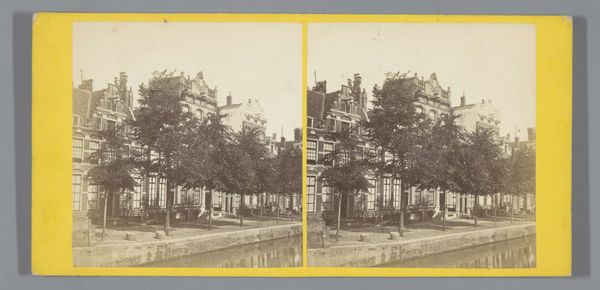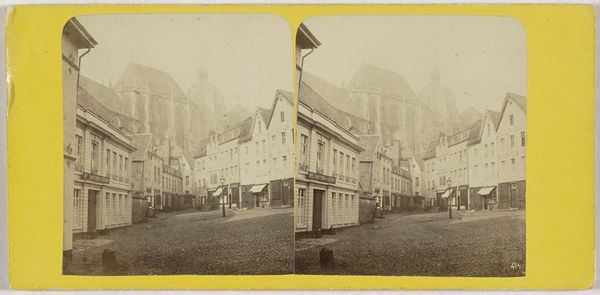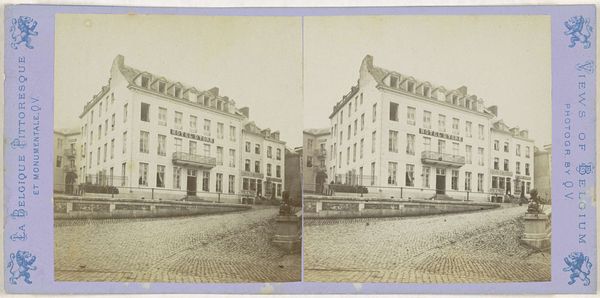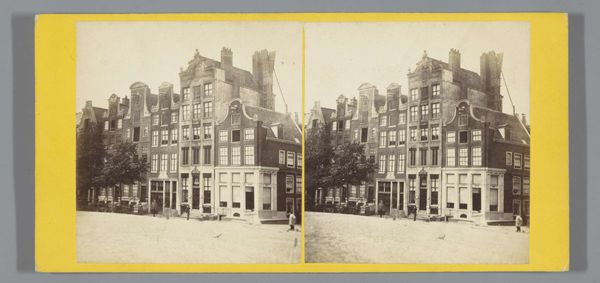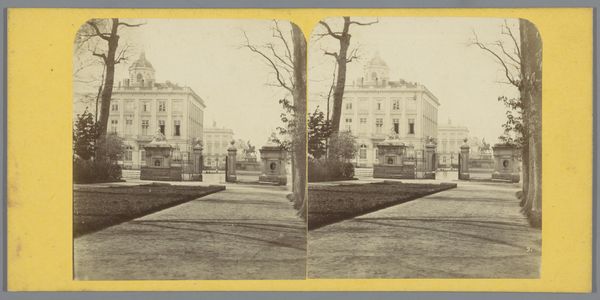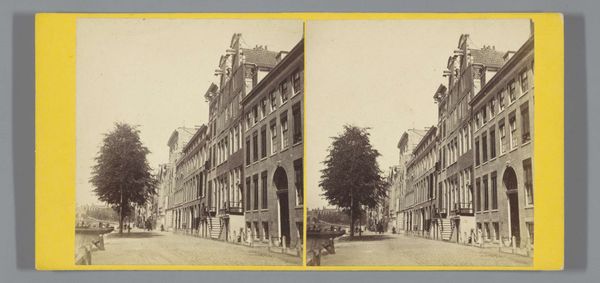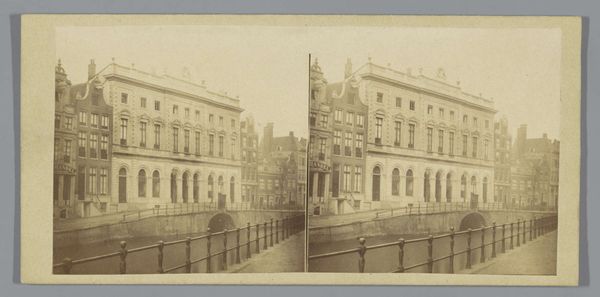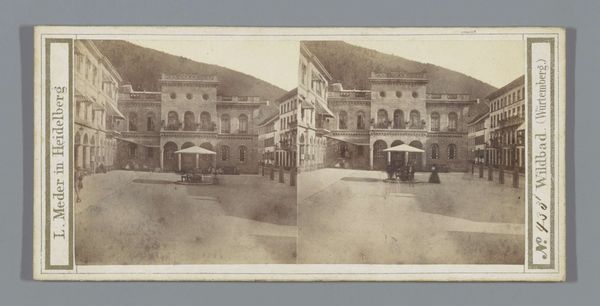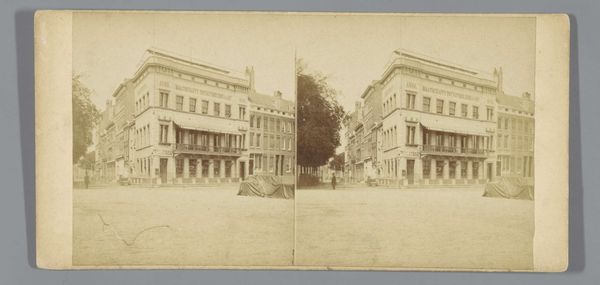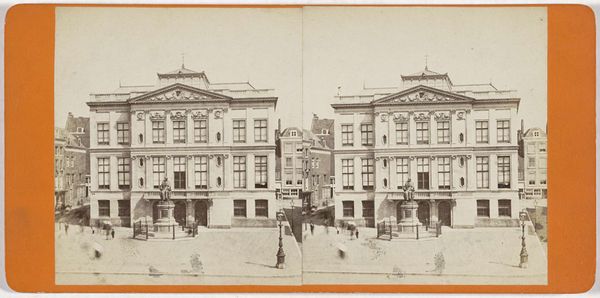
photo of handprinted image
statue
aged paper
toned paper
yellowing background
old engraving style
watercolour illustration
golden font
printing proof
natural palette
watercolor
Dimensions: height 86 mm, width 175 mm
Copyright: Rijks Museum: Open Domain
Curator: This is a print that presents the "Stadhuis van Aken en de Karlsbrunnen," dating somewhere between 1861 and 1870. It seems to be an early photographic print, judging by the paper and tone. Editor: It certainly has an aged feel, with the sepia tones and slightly blurred details creating a wistful, nostalgic atmosphere. It feels…still, almost frozen in time. Curator: Precisely. It captures a specific moment in Aachen's urban history, placing emphasis on the urban center as the hub for daily urban life. Editor: That central fountain is fascinating. Any insights into the figures adorning it? They must hold some civic significance. Curator: Indeed. The Karlsbrunnen, or Charles Fountain, typically features a statue of Charlemagne, underscoring Aachen’s historical ties to the Carolingian Empire. It’s not just a water source, but a powerful symbol of Aachen's identity and its legacy. Editor: The arrangement and choice of details give Charlemagne a rather majestic presence over the public square... do you think that was done to keep Charlemagne as a prominent political figure in local iconography? Curator: The visual prominence is undoubtedly a conscious choice to emphasize imperial continuity, but beyond political assertion, its significance in civic ceremonies cannot be ignored, for these visuals served as a reminder to ordinary citizens of the historical continuity between city life and the Roman past. Editor: These symbolic gestures do more than provide cultural depth—it’s almost a script being visually repeated. In some respects, this work illustrates how those values become etched into not just the art of Aachen but also its socio-political fiber. Curator: That’s right. Through prints like this, historical narratives are distributed and democratized to reinforce the idea that society must maintain its ties to this heroic past. Editor: What an extraordinary intersection of art, history, and cultural memory! The way it evokes time adds another emotional layer. Curator: Precisely; in a time when visual imagery and prints began their distribution into society, these pictures played a central role in reminding a city of its heritage.
Comments
No comments
Be the first to comment and join the conversation on the ultimate creative platform.

